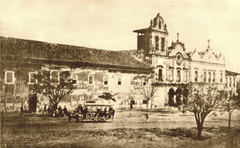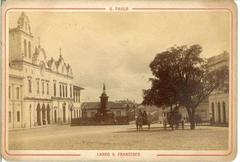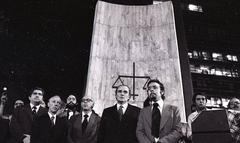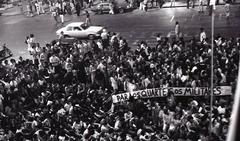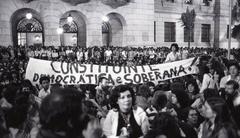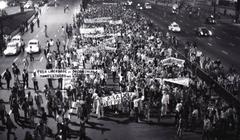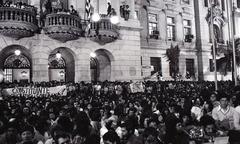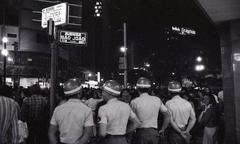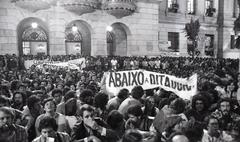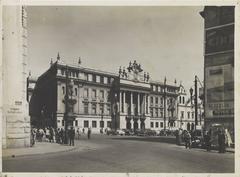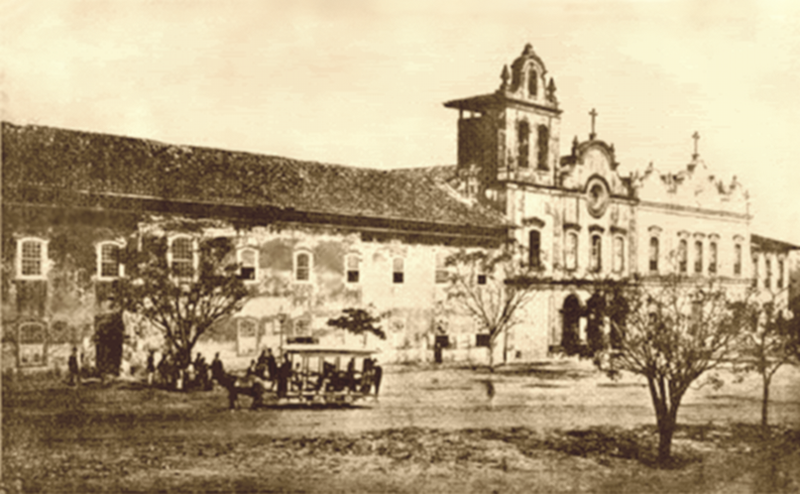
Largo de São Francisco: Visiting Hours, Tickets, and Historical Guide to São Paulo’s Baroque Landmark
Date: 14/06/2025
Introduction
Largo de São Francisco is one of São Paulo’s most historically significant squares, renowned for its colonial Baroque architecture, religious roots, and as the home of the prestigious Law School of the University of São Paulo. Located in the heart of the city’s historic center, the Largo offers a unique window into Brazil’s colonial past, religious traditions, academic legacy, and civic life. This comprehensive guide will provide detailed insights into its history, practical visitor information, accessibility, and nearby attractions—helping you plan a rewarding visit to this emblematic site (University of São Paulo Law School, Wikipedia, Petit Futé).
Table of Contents
- Early Foundations and Colonial Beginnings
- Architectural Evolution and Baroque Legacy
- Transformation to Legal and Academic Hub
- Urban Development and Changing Names
- Visiting Hours, Tickets, and Accessibility
- Cultural Events and Community Traditions
- Nearby Attractions and Travel Tips
- Preservation and Heritage Status
- Frequently Asked Questions (FAQ)
- Conclusion and Recommendations
- References and Further Reading
Early Foundations and Colonial Beginnings
The origins of Largo de São Francisco trace back to the arrival of Franciscan friars in São Paulo in the 17th century. Initially settling near the Church of Saint Anthony, the friars relocated in 1642 to higher ground—today’s Largo de São Francisco—after being granted land by the City Council (Wikipedia). The construction of the Convent of São Francisco began soon after, culminating in its inauguration in 1647. This established the area as a central religious and social hub in colonial São Paulo, with annual events such as the Festa das Chagas de São Francisco highlighting its importance (InfoEscola).
Architectural Evolution and Baroque Legacy
Largo de São Francisco is a testament to Portuguese colonial Baroque architecture. The main church, built with taipa de pilão (rammed earth) walls up to 1.5 meters thick, reflects a blend of simplicity and ornate detailing typical of the colonial Brazilian Baroque style (PlanetWare). The interior features religious iconography, gilded woodwork, and significant paintings, while the façade is adorned with Baroque ornamentation.
The complex includes:
- Igreja de São Francisco de Assis (Church of Saint Francis): Built between 1642 and 1647, later restored after an 1870 fire, with modest yet elegant interiors and historically significant religious artworks.
- Igreja da Ordem Terceira da Penitência (Church of the Third Order): Constructed from 1676 to 1791, currently closed due to structural concerns but visible from outside.
- Law School of the University of São Paulo: The original Franciscan friary was repurposed in 1828 for the new law school. In the 20th century, the building was reconstructed in neo-colonial style, blending colonial motifs with modern amenities (Wikipedia PT).
This architectural layering—Baroque, colonial, and neo-colonial—creates a visually compelling and historically rich environment (SãoPaulo.com.br).
Transformation to Legal and Academic Hub
In the 1820s, the Franciscan friars vacated the convent when the imperial government established the Academy of Social and Legal Sciences (now the Law School of the University of São Paulo) on the same site (Wikipedia). This institution has since become a cradle of legal education in Brazil, producing many of the nation’s presidents, intellectuals, and jurists (Jornal USP). The school remains a symbol of academic excellence and civic engagement, frequently hosting public lectures, graduation ceremonies, and political rallies.
Urban Development and Changing Names
Throughout its history, Largo de São Francisco has reflected the urban evolution of São Paulo. Once known as Largo do Capim due to the abundance of grass, and later as Largo do Curso Jurídico following the law school’s foundation, it eventually adopted its current name. The square is also the origin point for Avenida Brigadeiro Luís Antônio, a major city thoroughfare (Petit Futé). Its central location makes it a lively crossroads for students, professionals, and visitors.
Visiting Hours, Tickets, and Accessibility
Opening Hours
- Church of São Francisco: Open Tuesday to Sunday, 9:00 AM to 5:00 PM. Closed Mondays. Hours may vary on holidays.
- Law School Library: Open during academic hours and special events; check the official website for details.
- Largo de São Francisco Square: Open to the public 24/7.
Tickets and Entry Fees
- Entry to the churches and square is free; donations are welcome for maintenance.
- Guided tours may incur a small fee; advance booking is recommended.
Accessibility
- The square and church entrances are accessible, with ramps and paved walkways.
- Some interior areas have steps or uneven flooring due to historic construction.
- Nearby metro stations (São Bento, Sé) and bus lines make public transport convenient.
Cultural Events and Community Traditions
Largo de São Francisco remains a vibrant center for cultural and religious activities. Highlights include:
- Annual Bread Distribution: On Saint Anthony’s feast day (June 13th), the Franciscan community distributes thousands of loaves of bread to the poor—a tradition reflecting the site’s historic commitment to charity (InfoEscola).
- Academic and Civic Events: The law school regularly hosts public lectures, graduation ceremonies, and has been the site of notable political rallies, reinforcing its role in democratic life (Jornal USP).
Nearby Attractions and Travel Tips
Largo de São Francisco is an excellent starting point for exploring São Paulo’s historic center. Noteworthy nearby attractions include:
- Sé Cathedral: The city’s neo-Gothic main cathedral.
- Pátio do Colégio: The site of São Paulo’s founding.
- São Bento Monastery: Famous for Gregorian chants and its historic architecture.
- Municipal Market: Renowned for local produce and traditional foods (Wide World Trips).
Travel Tips:
- Visit during daylight for safety and to experience the square’s lively atmosphere.
- Dress comfortably and be mindful of valuables; petty theft can occur in crowded areas (World Nomads).
- Use public transport for convenience; avoid late-night visits if possible.
- Carry some Brazilian Real for small purchases; major cards are widely accepted.
- Learn basic Portuguese phrases or use translation apps to ease communication (São Paulo City Info).
Preservation and Heritage Status
The Church of São Francisco has been a protected heritage site since 1982, with ongoing restoration projects preserving its Baroque features, painted ceilings, and gilded altarpieces (Wikipedia). The law school and the church complex are under the auspices of local and national heritage organizations, ensuring their continued significance in São Paulo’s cultural landscape.
Frequently Asked Questions (FAQ)
Q: What are the visiting hours for Largo de São Francisco and its churches?
A: The square is open 24/7; the Church of São Francisco is open Tuesday–Sunday, 9:00 AM–5:00 PM.
Q: Is there an entrance fee?
A: Entry is free; donations are appreciated.
Q: Are guided tours available?
A: Yes, guided tours are available and can be arranged in advance.
Q: Is the site accessible for people with disabilities?
A: The square and main entrances are accessible; some historic interiors may have limited access.
Q: How do I get there by public transport?
A: The closest metro stations are São Bento and Sé, both within a 10–15 minute walk.
Conclusion and Recommendations
Largo de São Francisco stands as a living testament to São Paulo’s colonial heritage, academic tradition, and vibrant community life. Whether you are a history enthusiast, an architecture lover, or simply curious about Brazilian culture, the square offers a rewarding and accessible experience. Explore the Baroque churches, experience the buzz of student life, and use the Largo as a launch point for discovering the city’s other historic gems.
For the latest updates, visiting hours, and guided tour information, consult the University of São Paulo Law School website and São Paulo’s official tourism platforms. For real-time tips and navigation, download the Audiala app and follow us on social media.
References and Further Reading
- Church and Convent of Saint Francis (São Paulo), Wikipedia
- Largo de São Francisco, Wikipedia Portuguese
- Visiting Hours and Historical Insights, Jornal USP
- Largo de São Francisco Overview, Petit Futé
- São Paulo Secreto – Historic Churches
- Travel Safety and Access Tips, World Nomads
- Travel Guide: Things To Do in São Paulo, Wide World Trips
- São Paulo City Info
- SãoPaulo.com.br – Largo de São Francisco
